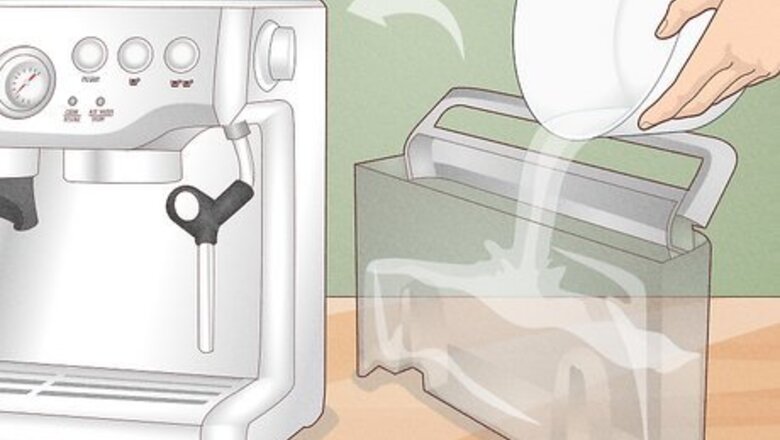
views
- Descale with Breville’s solution for the best results. Do not use vinegar solution if your machine has aluminum components—it can cause irreversible damage!
- Take out the water tank and pour in Breville’s descaling solution. Replace the tank and enter the ‘descale’ mode.
- Press the ‘1-cup’ button to descale the coffee component. Turn the steam dial left to descale the steam component then turn it right to descale the hot water component.
- Repeat until no descaling solution remains then flush the machine with clean water to remove any leftover solution. Descale every 3-6 months to avoid performance issues!
Descaling Your Machine
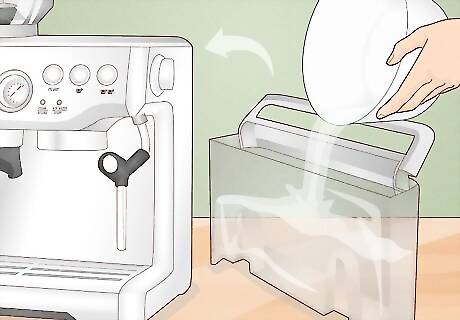
Remove the machine’s components and pour in the descaling solution. First, empty the drip tray and water tank, then remove the water filter. Dissolve one packet of Breville’s descaling solution into 1 litre (34 fl oz) of warm water. Pour this solution into the water tank, then re-insert the tank into the machine.

Enter the ‘descale’ mode. With the machine off, simultaneously press and hold the ‘2-cup’ and ‘power’ buttons to enter the descale mode. The unit will heat up during this process, and the power button should flash continuously. Your machine is ready for descaling when the ‘1-cup’ button, ‘power’ button, ‘clean/descale’ indicator, and ‘hot water/steam’ indicator are illuminated.
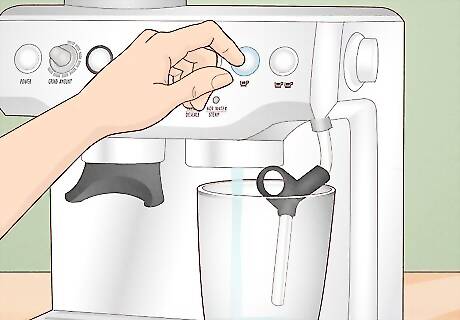
Descale the coffee component of the machine. To catch the solution, place a 2 liter (68 oz) container under the steam wand. Press the ‘1-cup’ button to start descaling the coffee component of the machine–it should take about 25 seconds and the ‘1-cup’ button should flash continuously.

Descale the steam and hot water components. Manually turn the steam dial left towards the steam icon–wait about 13 seconds for the steam component to descale. Then, turn the steam dial right towards the water icon–wait about 8 seconds to descale the water component. Remember to turn the steam dial back to its original position once you finish descaling the components.
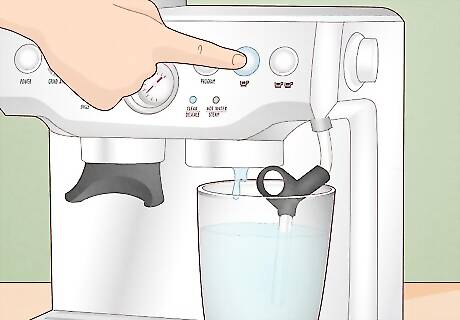
Repeat until no descaling solution remains. At this point, around half of the descaling solution should remain in the water tank. Repeat the previous steps to continue the descaling process until all the descaling solution has run through the steam wand.
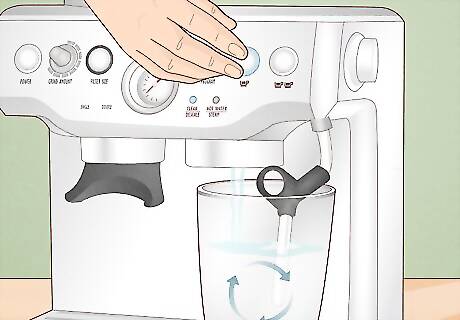
Flush the machine with clean water. Remove the water tank and thoroughly rinse it. Up to the max line, refill the tank with cold, fresh water and reinsert it in the machine. Repeat the previous steps with fresh water to ensure there isn’t any residue from the descaling solution. Check that there isn’t any scent leftover from the descaling solution and make sure the rinsed water isn’t cloudy–it should be clear!
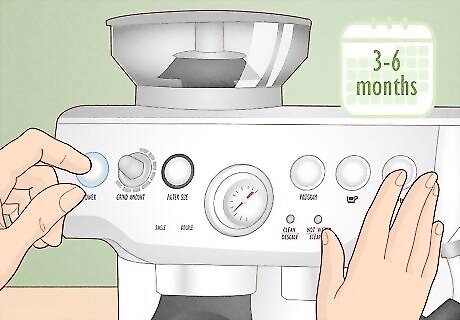
Descale your espresso machine every 3-6 months. It’s important to descale your machine every few months to avoid clogging and/or water issues. Some Breville models even feature a clean/descale light that automatically illuminates when you need to descale your machine! If you use your machine in an office (up to 6 times per day), descale your machine every 3 weeks to maintain the quality of your espresso.
Alternative Descaling Solutions

Purchase an alternative commercial solution. Although the safest bet is to use Breville’s descaling solution (for warranty purposes), most commercial alternatives are more affordable and just as effective! They come in an array of options (liquid, powder, and tablet form) so choose one that fits your budget and preference. It’s helpful to look for similar ingredients found in Breville’s solution or purchase an alternative from the same manufacturer, like Cafetto. Caffeto’s self-branded descaler is approximately half the price of one from Breville.
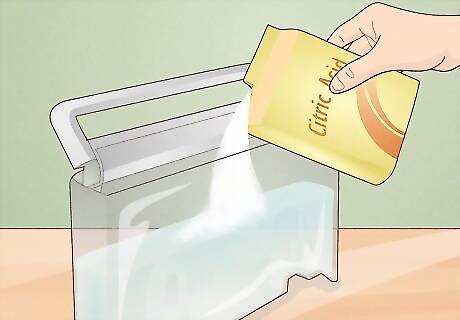
Try citric acid for a natural alternative. Citric acid is a safe disinfectant that’s found in almost every commercial descaling solution. To make your own solution, combine 1 litre (34 fl oz) of water with 10 grams (0.35 oz) of citric acid. Unlike vinegar, citric acid cleaning solutions don't leave behind a sour stench! Since it’s naturally found in fruit, citric acid may not be as effective as the ingredients in commercial descaling solutions–it might take several cycles to completely clean your machine.

Check your machine’s instructions before using vinegar. There’s a lot of controversy on whether you should clean your espresso machine with vinegar. In general, vinegar is a safe descaling solution, but it’s always best to read the instruction and/or safety manual of your machine. For the solution, mix equal parts distilled white vinegar and water. The best way to prevent your coffee maker from building up calcium deposits is to use only distilled water. If you do not have distilled water and your coffee machine already has some build-up, you can use vinegar. You can wash all its parts and dry them. Then put all its parts together and fill the water tank with half water and half vinegar. Run as many cycles as possible until the tank is empty. You can use vinegar to descale, remove coffee residue, and disinfect your coffee machine. Avoid using vinegar if your machine has an aluminum heating block—the acetic acid in white vinegar can cause potential damage by eroding the interior components! Flush your machine with clean water 3-4 times to avoid a sour aftertaste in your espresso.



















Comments
0 comment